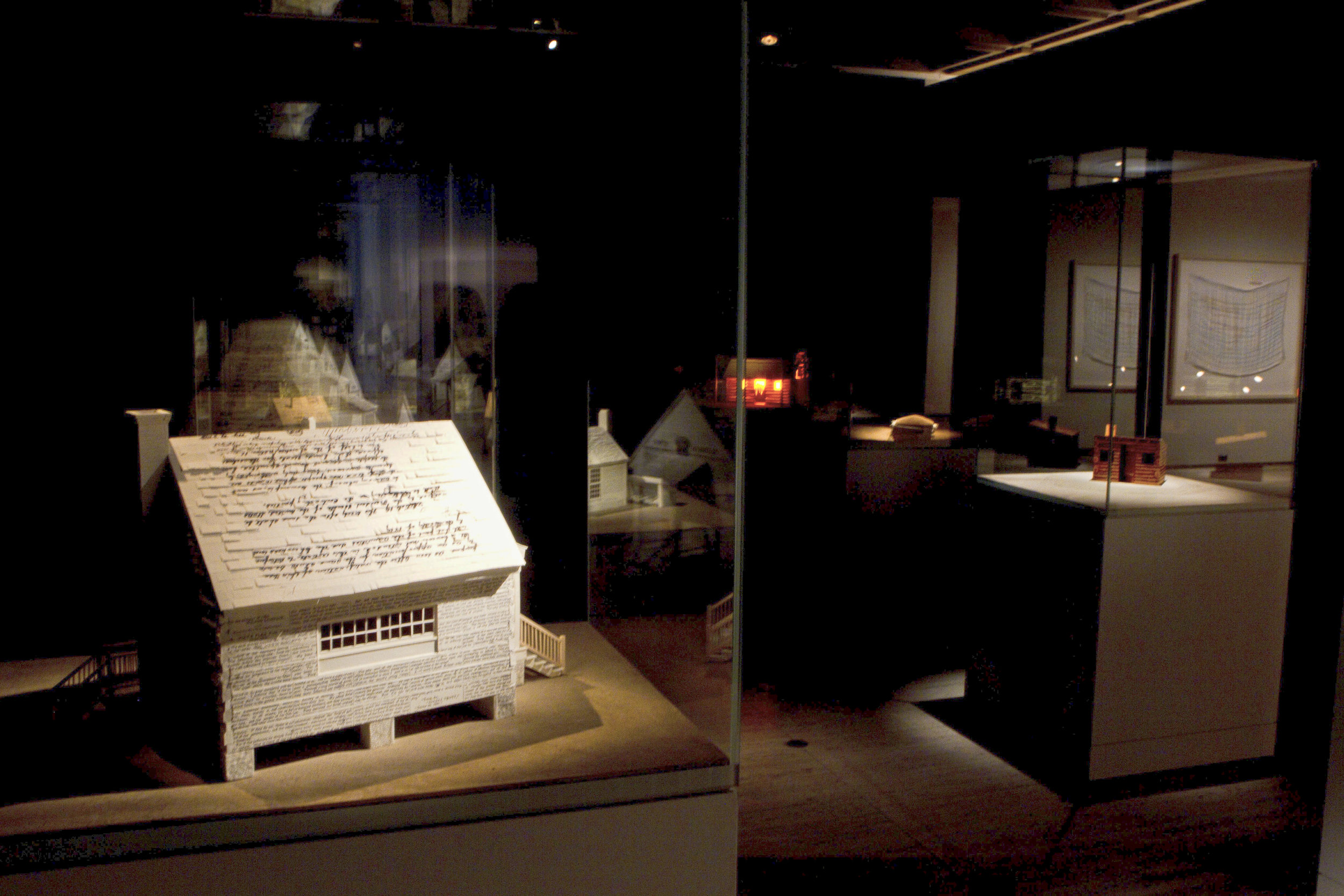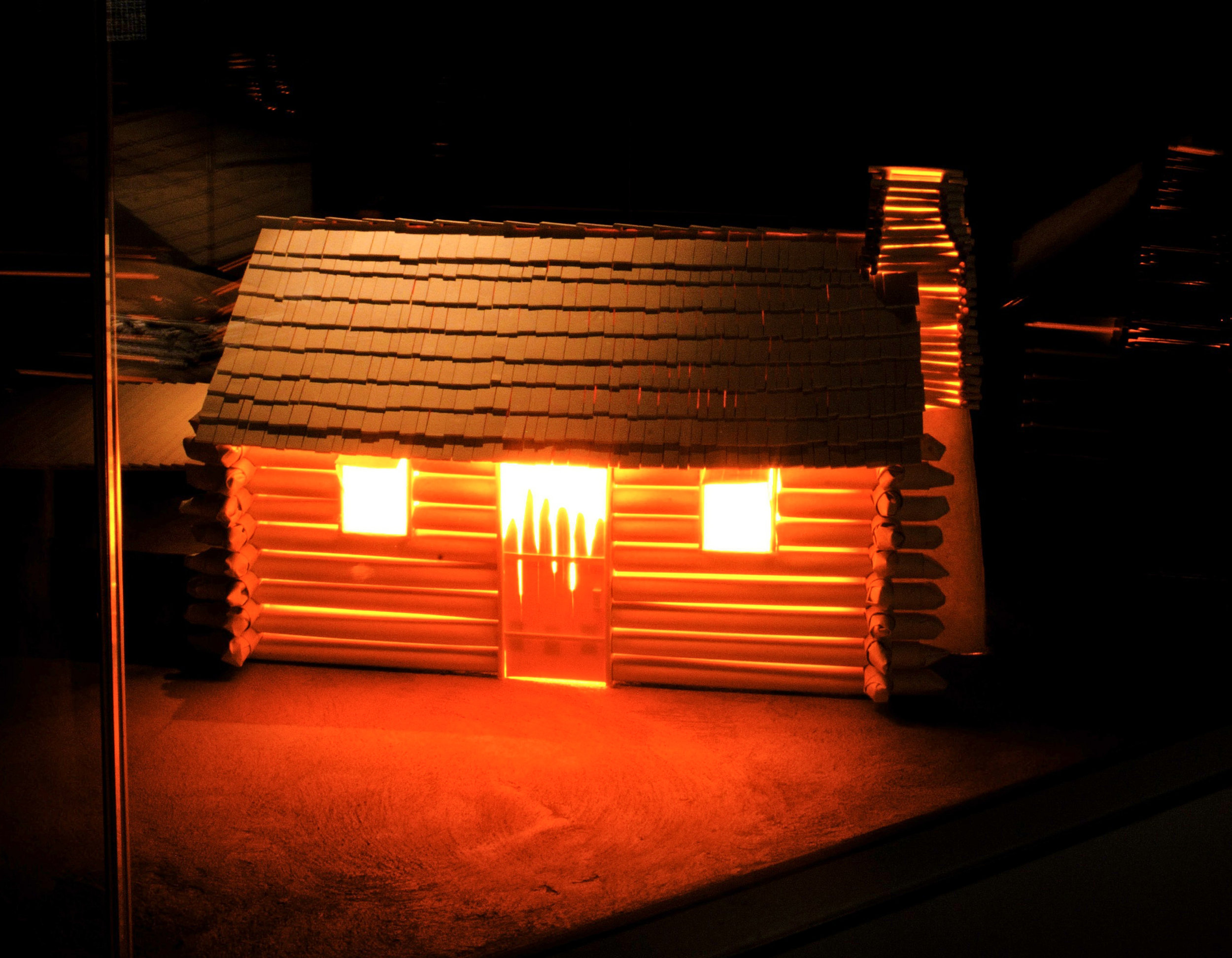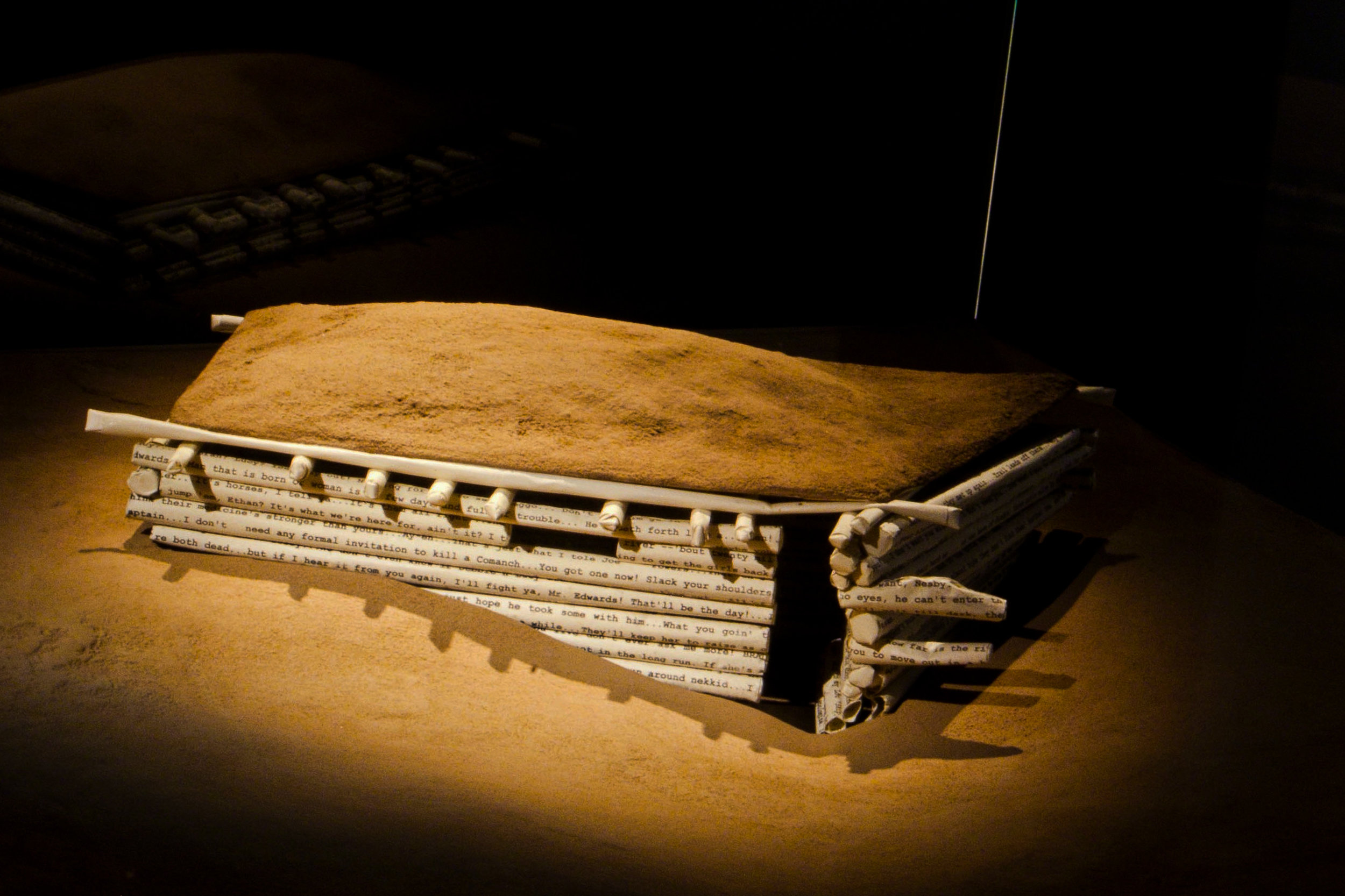









Eight paper model sculptures of log cabins displayed in vitrines—four of which are based on fictional models taken from painting, spectacle, and cinema, and four on historic structures. Prophetstown appropriates the miniature diorama—a museum format associated with the representation of Native American peoples and their dwellings—and deploys a range of specific references to look critically at an American frontier icon.

Handmade paper, archival ink, and archival board
Dimensions: cabin: 12.25 x 18 x 10.5 inches; shed: 3 x 8.25 x 7.25 inches
Thomas Cole, founder of the Hudson River School of painting, depicted a frontier family in their log cabin, a popular domestic motif of the era, in his 1847 painting "Home in the Woods" (the source for this sculpture). Printed on this sculpture are facsimiles of the 1809 Treaty of Fort Wayne that, despite objections from the nations involved, conveyed some three million acres of Indian land to the U.S.

Handmade paper, archival board, and faux flame device
Dimensions: 12.5 x 21.25 X 14 inches, shed: 4 x 10.25 x 8.5 inches
One of the features of "Western Land", an attraction at Disneyland Tokyo, is a perennially burning settler log cabin (the source for this sculpture), which is based on the original prop at Disneyland in California that included a settler mannequin with an arrow in his chest.

Handmade paper, archival board, black archival paper, and acrylic paint
Dimensions: 9 x 9.5 x 7.5 inches
The climactic finale of Buffalo Bill's Wild West was "Attack on the Burning Cabin". In this spectacle, Native American performers simulated an attack on a prop log cabin (the source for this sculpture) housing a white family, who were then "rescued" by Buffalo Bill and his cowboys.

Handmade paper, archival board, archival ink, and grout
Dimensions: cabin: 5 x 16 x 8 inches; base: 5 x 26 x 26 inches
In John Ford's classic 1956 western, The Searchers, Indian-hating Texan Ethan Edwards, played by John Wayne, finds the remains of his brother's slain family in the smoldering ruins of a dugout cabin (the source for this sculpture) on their ranch following a Comanche raid. Printed on this sculpture are excerpts from the film script.

Handmade paper, archival ink, and archival board
Dimensions: 9.5 x 7.5 x 9.25 inches
Ted Kaczynski, aka the "Unabomber", is an American mathematician and former professor who moved to a remote shack in Montana (the source for this sculpture) in 1971. Angered by the development of the surrounding wilderness, he launched a mail bomb campaign that killed three and injured 23. Kaczynski's demands to publish his manifesto, Industrial Society and Its Future—excerpts from which are printed on this sculpture along with the FBI wanted poster—were met by the New York Times and Washington Post in 1995. Apprehended in 1996, he is serving a life sentence in federal prison.

Handmade paper, archival ink, archival board, and balsa wood
Dimensions: cabin: 12.5 x 7.75 x 11 inches; shed 3.5 x 5 x 2.5 inches
American author, poet, naturalist, philosopher, abolitionist, and tax resister, Henry David Thoreau built a cabin (the source for this sculpture) on Walden Pond in Massachusetts as an experiment in simple living, immortalized in his 1854 book Walden; or Life in the Woods. He also authored the landmark 1849 essay Resistance to Civil Government (Civil Disobedience)—pages from which are printed on this sculpture—that influenced both Gandhi and Martin Luther King, Jr.

Handmade paper, archival ink, archival board, and balsa wood
Dimensions: 19 x 17.25 x 31 inches
The Cherokee Nation was an autonomous, Southern Appalachian tribal nation who modernized, adopting farming techniques, a written constitution, a judiciary, and printed their own bilingual (Cherokee/English) newspaper, The Cherokee Phoenix. This sculpture is based on the print shop that housed their press, and printed on the sculpture are newspaper pages from 1831. Despite strenuous attempts by the Cherokee Nation to remain in their homelands, the signed but unauthorized Treaty of New Echota (printed on the roof of the sculpture) engineered their forced removal to Indian Territory (modern-day Oklahoma) in the Trail of Tears—a brutal march in the winter of 1838 in which approximately 4,000 perished.

Handmade paper, archival ink, archival board, balsa wood, and 22kt Italian gold leaf
Dimensions: 11 x 16.5 x 9 inches
The Eaglehawk Lockup (the source for this sculpture) in Bendigo, Victoria, Australia, built in 1855 during the Victorian gold rush, is a rare Australian example of North American-style log cabin construction. Mining displaced Australian Aborigines from their lands, while environmentally devastating the lands in the process.